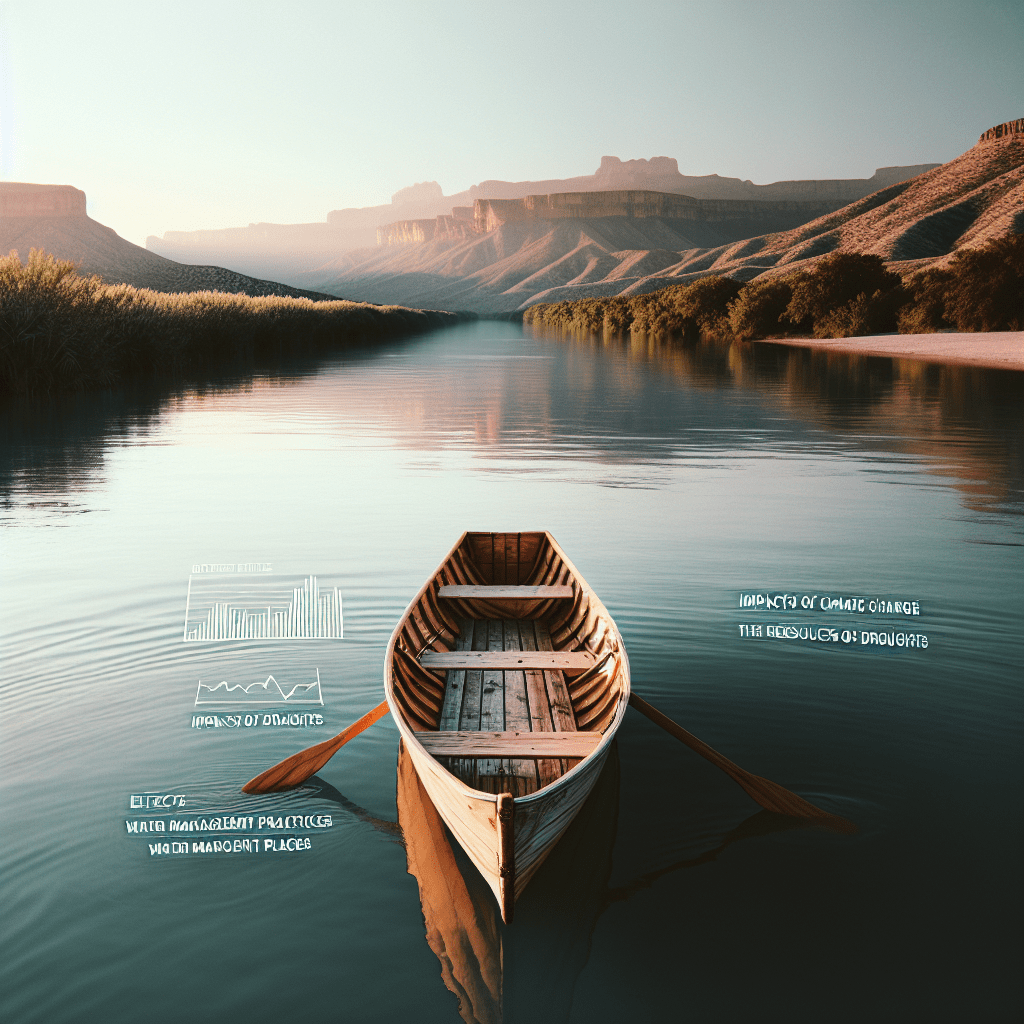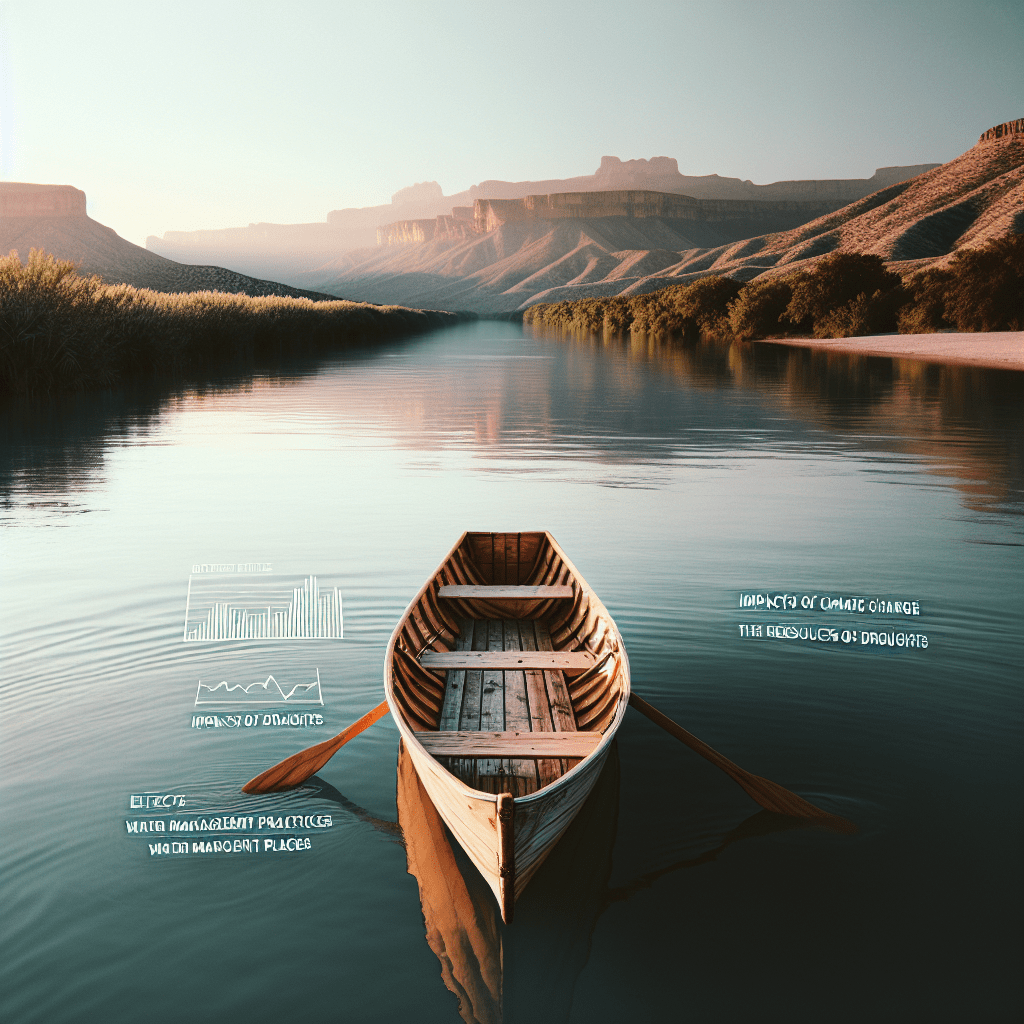
If you’re wondering about the current water level in the Rio Grande, we’ve got some exciting information for you. The iconic river that spans through multiple states and defines the border between the United States and Mexico has been experiencing fluctuating water levels lately. From record low levels to recent surges caused by heavy rainfall, the Rio Grande’s water level has been a topic of great curiosity and concern. Join us as we explore the current conditions and the impact they have on the communities and ecosystems along the river’s path.
Factors Affecting Water Level
Snowmelt from the Rocky Mountains
Snowmelt from the Rocky Mountains has a significant impact on the water level in the Rio Grande. As the winter season comes to an end and temperatures rise, the snow accumulated in the mountains begins to melt. This melting snow flows into the river, increasing its water level. The volume of snowmelt can vary depending on factors such as snowpack depth and rate of melting, which are influenced by weather patterns and climate conditions.
Dams and Reservoirs
Dams and reservoirs play a crucial role in regulating the water level in the Rio Grande. These structures are strategically built along the river to store water during periods of high flow and release it during times of low flow. By controlling the water discharge, dams and reservoirs not only help to maintain a consistent water level but also provide a reliable water source for various purposes such as irrigation, drinking water supply, and hydropower generation.
Rainfall and Precipitation
Rainfall and precipitation are major contributors to the water level in the Rio Grande. When it rains or snows within the river basin, the water from these sources flows into the river, increasing its volume. The amount and timing of rainfall and precipitation can vary greatly, affecting the overall water level. Climate patterns such as El Niño and La Niña can also influence the amount and distribution of rainfall, leading to fluctuations in the water level over time.
Agricultural Water Use
Agricultural water use is another factor that affects the water level in the Rio Grande. Agriculture accounts for a significant portion of the water withdrawn from the river for irrigation purposes. As farmers divert water from the river for their crops, the overall water level decreases. Increased agricultural water use during periods of low flow can further exacerbate the water scarcity issues in the region and impact the river’s water level.
Climate Change and Global Warming
The effects of climate change and global warming are increasingly affecting the water level in the Rio Grande. Rising temperatures and changing weather patterns can lead to shifts in precipitation patterns, increased evaporation rates, and accelerated glacier melt in the mountains. These factors can result in reduced water availability and lower water levels in the river. Moreover, climate change can also lead to more frequent and intense droughts, which can further impact the water level in the Rio Grande.
Water Level Monitoring
USGS Streamflow Gauges
The United States Geological Survey (USGS) operates streamflow gauges along the Rio Grande and its tributaries to monitor the water level. These gauges provide real-time data on the flow rate and water level, allowing for the continuous monitoring of changes in the river’s water levels. The data collected from these gauges is crucial for understanding the river’s hydrological dynamics, predicting flood events, and informing water resource management decisions.
Satellite Remote Sensing
Satellite remote sensing technology is also used to monitor the water level in the Rio Grande. Satellites equipped with sensors can detect changes in the river’s surface water extent and monitor its fluctuations over time. This data can provide valuable insights into the overall water level and help assess the impact of factors such as snowmelt, rainfall, and evaporation on the river’s water resources. Satellite remote sensing enables a broader and more comprehensive understanding of the water level across large geographical areas.
Real-Time Observations
Real-time observations from field monitoring stations and automated sensors play a crucial role in monitoring water levels in the Rio Grande. These monitoring stations are strategically located along the river and its tributaries, providing data on various parameters such as water level, flow rate, and water quality. By continuously observing and recording these variables, scientists and water resource managers can track changes in the water level and make informed decisions regarding water allocation and flood management.

Historical Water Levels
Recorded Data
Recorded data on historical water levels in the Rio Grande provide valuable insights into the river’s hydrological patterns and variability. By analyzing long-term records, scientists can identify trends and patterns in the water level and understand the river’s response to different climatic and anthropogenic factors. This historical data is instrumental in developing water management strategies and forecasting future water level scenarios.
Droughts and Flooding
The historical water level data also helps in understanding the occurrence and impact of droughts and flooding events in the Rio Grande. Droughts are characterized by an extended period of below-average precipitation, resulting in reduced water availability and lower water levels. Conversely, intense rainfall or snowmelt can lead to flooding, causing a rapid rise in the water level. The analysis of historical data helps identify patterns and trends in drought and flood occurrence, enabling better preparedness and response measures.
Impacts of Low Water Levels
Ecological Consequences
Low water levels in the Rio Grande can have significant ecological consequences. As the water level decreases, the river’s habitat for aquatic organisms and plant life is diminished. Reduced water availability can lead to loss of habitat and disruptions in the aquatic ecosystem, affecting fish populations, migratory pathways, and overall biodiversity. Low water levels can also result in poor water quality, increased sedimentation, and higher concentrations of pollutants, further exacerbating the ecological impacts.
Drought Effects on Agriculture
Low water levels pose significant challenges for agriculture in the Rio Grande region. Reduced water availability during periods of drought can impede irrigation practices and limit crop production. Farmers may face difficulty in obtaining adequate water supplies for their crops, leading to lower yields and economic losses. Drought effects on agriculture can have far-reaching consequences, impacting food security, rural economies, and livelihoods dependent on agricultural activities.
Water Supply Challenges
Low water levels in the Rio Grande also present challenges for water supply. Municipalities, industries, and households rely on the river as a source of drinking water, irrigation water, and industrial water. When the water level decreases, the available water supply becomes limited, increasing the risk of water shortages and the need for water conservation measures. Decreased water levels can result in higher demand for alternative water sources and necessitate the implementation of water management strategies to ensure a reliable water supply.

Impacts of High Water Levels
Flooding Risks
High water levels in the Rio Grande can lead to increased risks of flooding. Intense rainfall events, rapid snowmelt, or dam releases can cause the river’s water level to rise rapidly and exceed its capacity. When the river overflows its banks, it can result in flooding of nearby areas, including residential areas, agricultural fields, and infrastructure. Flooding can cause property damage, disrupt transportation routes, and pose risks to human safety, highlighting the importance of flood management and preparedness measures.
Infrastructure Damage
High water levels can also result in infrastructure damage along the Rio Grande. Bridges, roads, levees, and other infrastructure built in proximity to the river are vulnerable to the destructive forces of flooding. As the water level rises, structures may be submerged, eroded, or even completely washed away. The repair and rebuilding of damaged infrastructure can be costly and time-consuming, emphasizing the need for resilient design and planning to mitigate the impact of high water levels on infrastructure.
Water Quality Issues
High water levels in the Rio Grande can also lead to water quality issues. The increased flow rate during periods of high water levels can transport sediments, pollutants, and other contaminants from the riverbanks and nearby areas into the river. This can result in turbid water, higher concentrations of nutrients, and reduced water quality. The impact of water quality issues extends beyond the river itself, affecting downstream water users, aquatic ecosystems, and human health.
Water Level Forecasting
Hydrological Models
Hydrological models are used to forecast water levels in the Rio Grande by simulating the complex interactions between various hydrological factors. These models consider inputs such as rainfall, snowmelt, evaporation, and water use to predict the future water level. By incorporating historical data, climate projections, and real-time observations, hydrological models provide valuable information for water resource planning, flood forecasting, and drought management.
Weather Forecasting
Weather forecasting plays a crucial role in water level forecasting for the Rio Grande. Meteorological data, including precipitation forecasts, temperature predictions, and drought indices, are used to assess the potential impact on water availability and the river’s water level. By anticipating weather patterns, water managers can better prepare for potential changes in the water level and implement appropriate water management strategies accordingly.
Predictive Analytics
Predictive analytics techniques, such as machine learning algorithms, are also used to forecast water levels in the Rio Grande. These algorithms analyze historical water level data, climate variables, and other relevant factors to develop predictive models. By identifying patterns and correlations in the data, predictive analytics can provide forecasts of future water levels, allowing for proactive planning and decision-making.
Water Management Strategies
Water Conservation Measures
Water conservation measures play a crucial role in managing water levels in the Rio Grande. These measures include implementing efficient irrigation techniques, promoting water-saving practices in households and industries, and reducing water losses through infrastructure improvements. By conserving water resources, reducing water demand, and increasing water use efficiency, water conservation measures help mitigate the impact of low water levels, enhance water availability, and ensure sustainable water management.
Water Allocation Agreements
Water allocation agreements are essential for managing the water levels in the Rio Grande and ensuring equitable distribution of water resources. These agreements establish the rights and responsibilities of various stakeholders in terms of water allocation and use. By setting priorities, allocating water based on need, and regulating water withdrawals, these agreements help prevent conflicts and promote cooperative water management among different user groups, including municipalities, irrigation districts, and environmental organizations.
Drought Contingency Plans
Developing and implementing drought contingency plans is crucial for managing the impact of low water levels during drought periods. These plans outline a set of actions and strategies to be taken during drought emergencies, including measures such as water demand management, temporary water use restrictions, and the activation of alternative water sources. Drought contingency plans help ensure a coordinated response to drought events, safeguard water supplies, and maintain critical water services in the face of prolonged water scarcity.
Efforts for River Restoration
Ecosystem Restoration Projects
Ecosystem restoration projects aim to improve the ecological health and functioning of the Rio Grande and its surrounding habitats. These projects involve actions such as river channel restoration, wetland construction, reforestation, and habitat enhancement. By restoring natural hydrological processes, enhancing wildlife habitats, and reducing the impact of human activities, ecosystem restoration contributes to the preservation and recovery of the river’s ecosystem, ultimately supporting the water level and overall river health.
Habitat Conservation Initiatives
Habitat conservation initiatives focus on protecting and preserving critical habitats within the Rio Grande basin. By identifying important habitats for endangered species, migratory birds, and other wildlife, these initiatives work towards conserving biodiversity and maintaining healthy ecosystems. Protecting key habitats ensures the availability of suitable habitats for aquatic organisms and creates opportunities for their recovery and population growth, consequently contributing to the sustainable water level in the river.
Community Involvement and Education
Educational Outreach Programs
Educational outreach programs play a vital role in raising awareness and understanding of water-related issues among the public. These programs provide educational materials, organize workshops, and conduct school visits to educate communities about the importance of water conservation, the impact of low and high water levels, and the need for sustainable water management practices. By empowering individuals with knowledge, educational outreach programs promote responsible water use and encourage collective efforts for water conservation.
Citizen Science Initiatives
Citizen science initiatives engage citizens in monitoring and collecting data on water levels in the Rio Grande. By involving the public in scientific data collection, these initiatives not only contribute to a broader understanding of the river’s water level dynamics but also foster community involvement and ownership in water resource management. Citizen science initiatives empower individuals to take an active role in protecting and monitoring their local water resources, enhancing the overall resilience and sustainability of the river system.
Public Awareness Campaigns
Public awareness campaigns aim to inform and engage the general public in water-related issues and promote behavior change towards sustainable water practices. These campaigns utilize various communication channels such as television, radio, social media, and community events to raise awareness about the importance of water conservation, the impact of high and low water levels, and the role individuals can play in preserving the Rio Grande’s water resources. By fostering a sense of collective responsibility, public awareness campaigns encourage positive actions for water stewardship.
Conclusion and Future Outlook
Challenges and Solutions
Managing water levels in the Rio Grande is a complex task, given the multitude of factors that influence it. The challenges posed by climate change, increased water demand, and competing interests necessitate innovative solutions and collaborative efforts. Adopting sustainable water management practices, implementing efficient water use technologies, and promoting water conservation at all levels are crucial steps towards addressing these challenges and ensuring a resilient water future for the Rio Grande.
Impact of Climate Change
Climate change is expected to have profound impacts on the water levels in the Rio Grande. Rising temperatures, altered precipitation patterns, and increased water scarcity will likely intensify the existing challenges associated with managing water resources. Adapting to these changes requires a proactive approach that includes investing in climate-resilient infrastructure, promoting ecosystem-based approaches, and fostering water governance frameworks that prioritize long-term sustainability.
Collaborative Efforts
Addressing the complex issues surrounding water levels in the Rio Grande requires collaborative efforts among stakeholders at various levels. The involvement of government agencies, water managers, scientists, community organizations, and the public is essential for implementing effective water management strategies, developing sustainable water policies, and fostering a culture of water stewardship. By working together, sharing knowledge, and pooling resources, we can overcome the challenges and ensure the preservation and sustainable use of the Rio Grande’s water resources for future generations.